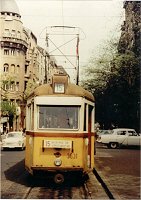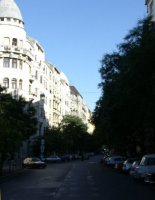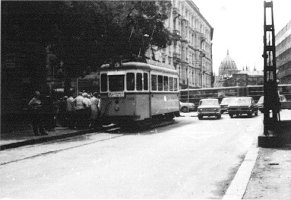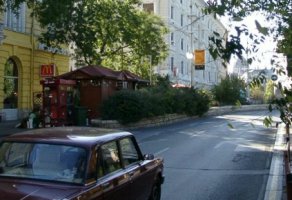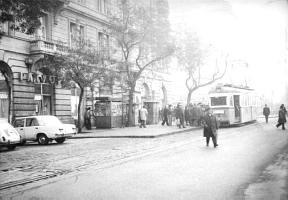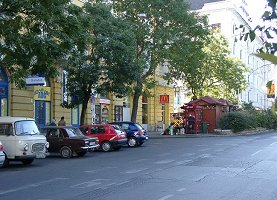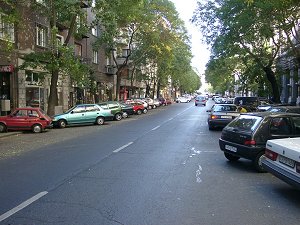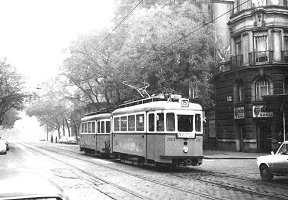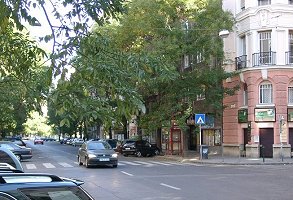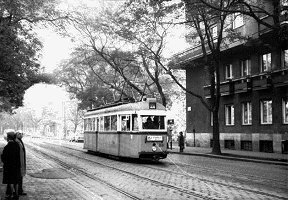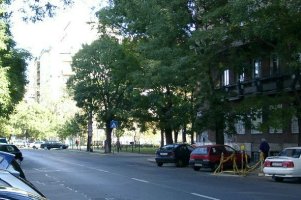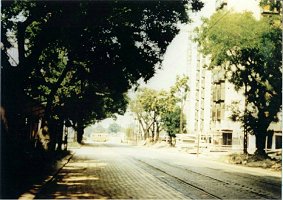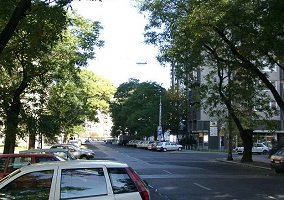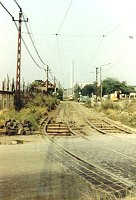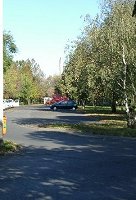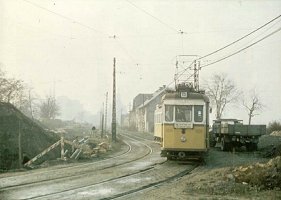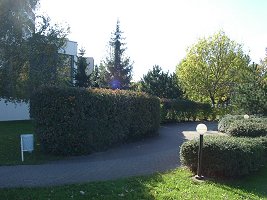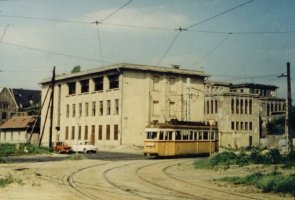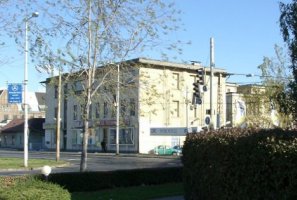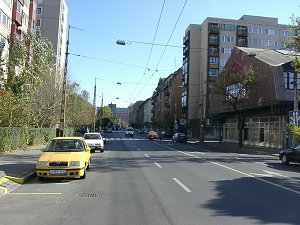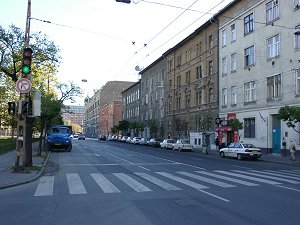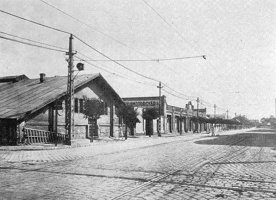budapest
other hungarian
close-up
lost rails
other countries
I don't have any memories about route 15: I was too young (only a little more than two years old), when it was closed on 15. November 1977. This seems to be the case with other people too: this is one of the most forgotten ones amongst the lost rails of Budapest. If you ask someone to name a few closed tram lines, he/she will tell you about route 58, the trams on Rákóczi út or Üllői út, but will very likely forget to mention route 15. This is strange, because the line connected two quite beehive places, namely the Pest bridgehad of Margit híd (Margarite bridge), with stops of tram routes 2, 4, 6, trolley bus line 76 and a few normal bus lines, and Váci út, where route 3 and 55 ran, along with a couple of bus and trolley bus lines.
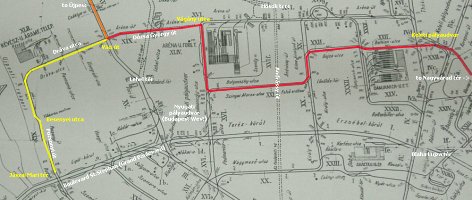 The
story of route 15 begins in 1903, when one of the two Budapest tram companies,
BVVV launched its service between the Pest bridghead of Margit híd
and steam-mill Viktória, located where Besenyei utca now
is. This was an extension of the left-hand Danube-side tram line, the
predecessor of today's route 2. In 1911 this line was extended to Váci
út with a new section built on Újpest rakpart (Újpest pier)
and Dráva utca. In the early days two services used this route:
line 16 and 18, both coming from Népliget, which is fairly on
the other side of Pest. A few years later a new service was started: line
2 (not related to the line currently sporting this number), winding through
narrow streets of downtown between Keleti pályaudvar (Budapest
East railway station) and Vágány utca near the railway underpass
on Dózsa György út. Later a separate service was also launched
between Jászai Mári tér (the Pest bridgehead of Margit híd) and
Vágány utca, and this was of course our good old route 15. Route
2 was stopped in the early 1940's, so route 15 had the tracks all for
itself around this district, known as Újlipótváros (New Leopoldtown)
from then on. In the 1950's the railway underpass at Vágány utca
was rebuilt, and the tracks of route 15 were connected to tracks on the
other side of the railway line. This marked to start of a series of serious
extensions and cutbacks: the eastern terminus was relocated to Nagyvárad
tér, then cut back to Keleti pályaudvar, and then to Váci
út in 1956, when tram service in the narrow streets between Dózsa
György út and Keleti pályaudvar was abandoned. In 1963 the
line was extended again, this time along Váci út to remise Újpest
(this is where the first horse tram had its terminus in 1866 - the turning
loop circled around the original tram end station!), and also a sub-route
was launched between Jászai Mari tér and Váci út. This
remained mostly unchanged until 1977 - only in its last weeks of service
did they extend the line up to Megyeri út (terminus of route
10) as a supplementary service during track maintenance works in Újpest.
The
story of route 15 begins in 1903, when one of the two Budapest tram companies,
BVVV launched its service between the Pest bridghead of Margit híd
and steam-mill Viktória, located where Besenyei utca now
is. This was an extension of the left-hand Danube-side tram line, the
predecessor of today's route 2. In 1911 this line was extended to Váci
út with a new section built on Újpest rakpart (Újpest pier)
and Dráva utca. In the early days two services used this route:
line 16 and 18, both coming from Népliget, which is fairly on
the other side of Pest. A few years later a new service was started: line
2 (not related to the line currently sporting this number), winding through
narrow streets of downtown between Keleti pályaudvar (Budapest
East railway station) and Vágány utca near the railway underpass
on Dózsa György út. Later a separate service was also launched
between Jászai Mári tér (the Pest bridgehead of Margit híd) and
Vágány utca, and this was of course our good old route 15. Route
2 was stopped in the early 1940's, so route 15 had the tracks all for
itself around this district, known as Újlipótváros (New Leopoldtown)
from then on. In the 1950's the railway underpass at Vágány utca
was rebuilt, and the tracks of route 15 were connected to tracks on the
other side of the railway line. This marked to start of a series of serious
extensions and cutbacks: the eastern terminus was relocated to Nagyvárad
tér, then cut back to Keleti pályaudvar, and then to Váci
út in 1956, when tram service in the narrow streets between Dózsa
György út and Keleti pályaudvar was abandoned. In 1963 the
line was extended again, this time along Váci út to remise Újpest
(this is where the first horse tram had its terminus in 1866 - the turning
loop circled around the original tram end station!), and also a sub-route
was launched between Jászai Mari tér and Váci út. This
remained mostly unchanged until 1977 - only in its last weeks of service
did they extend the line up to Megyeri út (terminus of route
10) as a supplementary service during track maintenance works in Újpest.
The tram line was replaced by trolley bus route 79 after 1977.
The pictures of the tram days on this page were taken in the seventies. In those years the main route 15 was operated with 3600-series vehicles, while sub-route 15A featured twin sets and sometimes (e.g. weekends) solo cars. Above: car number 3631 at the one-track terminus.
A 1000-series car at the terminus, which was located a few meters before the Grand Boulevard. The terminus of route 2 is located on the other side of the Boulevard, but there was no direct rail connection to that after WW2.
As you can see, the terminus laid in accent, that's why the stoppage was attended by auxilary staff: they pulled the handbrakes while the tram driver went to the other end of the vehicle.
The line was one-track only at the terminus: in Pozsonyi út it had two tracks in the middle of the street.
A 2000-series twin set crossing Balzac utca.
Szent István park. The street surface besides the tracks was paved with clinker (ceramic bricks), which would get very slippery sometimes.
The northern end of Pozsonyi út. I always thought these big concrete silos (known as a housing estate) were built in the eighties, but as we can see on the picture to the left, they were raised while the tram was still going. Overhead support poles can still be seen all over this section of Pozsonyi út.
The tracks went down to the pier after Besenyei utca. Originally this was an industrial district, but then it was torn down. In the sixties and seventies Újpest rakpart was a big mess, as you can see on the old photo. Now there's a housing estate here, just like the one we saw above at the end of Pozsonyi út. Not very nice, but at least they made a park where once the tracks were!
A 1900-series twin set leaving Dráva utca for Újpest rakpart.
The bend from Újpest rakpart to Dráva utca from the other side. In the background you can see transformer station "Kőtér" of BKV, which powered trams and trolley buses in the district. It's still used I believe.
I was unable to find pictures of Dráva utca in the sixties or seventies, so you must satisfy yourself with current views. The tracks remained in the pavement until the nineties, and the overhead supports are still there!
An industrial side-track crossing Dráva utca at Pannónia utca. Originally this track went almost down to the Parlament, but around 1900 they've cut it back. The remaining section was used until the seventies. There was an accident here on 23. July 1963: a 1600-series tramcar was ran over by a diesel loco. The tram tipped over and caught fire, but fortunately passengers could escape through the windows.
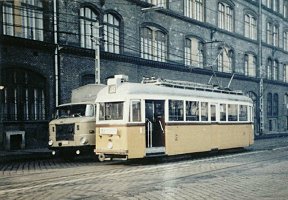
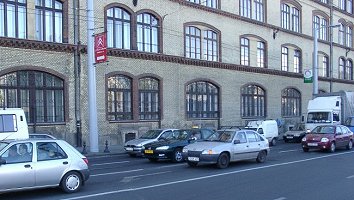
Terminus of 15A at the crossing of Dráva utca and
Váci út.
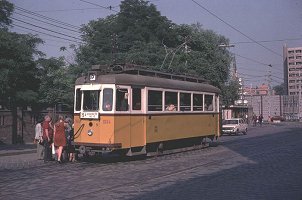
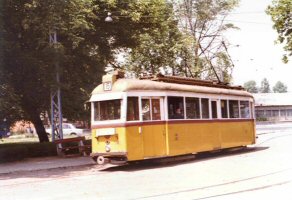
To the left: a "1000er" at the outer terminus of 15A at
the crossing of Dráva utca and Váci út (Heinz Heider).
The the right: a "Stuka" at the terminus of 15 at Újpest vasúti híd
(Harald Schachenhofer)
Váci út was a pretty simple terminus without a reserve track or even a boarding platform - the tram arrived, passengers alighted, the car reversed and then waited for its scheduled departure. Of course the main route 15 went further: it turned onto Váci út, and went until the turning loop at Újpest vasúti híd (Újpest railway bridge), which can be seen at the picture above to the right.
Back to the top Back to the main page
